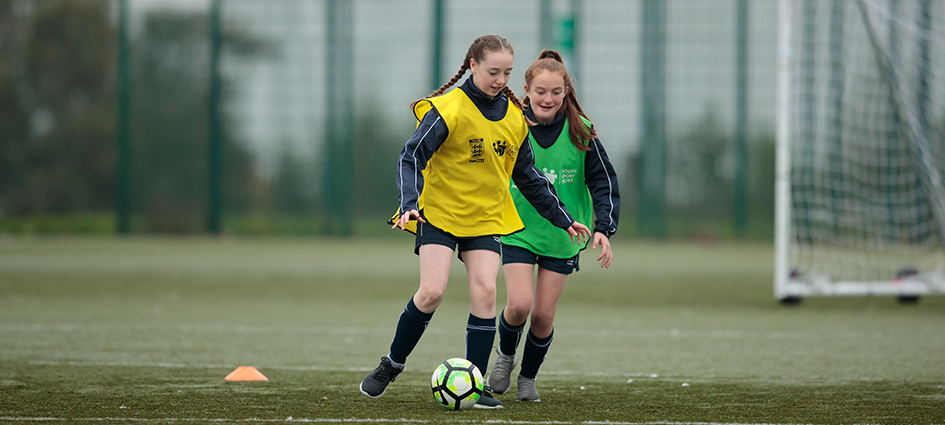Effective practice design

Increasing ball rolling time
- Lewis Dickman
- 31 October 2019
Former FA youth coach educator, Lewis Dickman, looks at how coaches can increase ball rolling time in their coaching sessions.
Opportunities to practice are fundamental to the development of better players. If we want players to improve, we must let them practice more and ensure they spend less time standing around listening to coaches.It’s important to stress, however, that this doesn’t mean that coaches simply stand back and watch. The skill of the coach is to communicate key messages in different ways to suit the players. This may mean speaking to the whole team group, other times it may be a unit of players, or specific interventions and challenges for an individual.
These are concepts that are crucial to the England DNA coaching fundamentals - guidelines for designing and delivering effective practice - particularly the importance of aiming for 70% ball rolling time during a practice session.
The important word in the DNA ball rolling statements is: aim. The percentage figure acts only as a guideline. Some coaches will feel comfortable hitting 70%, whilst others will find this a whole new experience.
The individual needs and wants of the players including: age, development, rest/work ratio and proximity to matchday, all must be considered. Again, the important word is aim as there will be times where a figure of 70% will not be attainable and does not meet the needs of the players on that particular day.
All coaches work in their own way with their own personalities, styles and approaches, and rightly so. The intention of the England DNA isn’t to stifle individual expression or to create clone coaches but to improve the opportunities to practice for the players.

Improving ball rolling time in your sessionsThrough working and supporting coaches my major observations have been:
- The length and number of times a coach intervenes: how can we be more effective?
- Reasons for intervention: is it for the player?
- Practice design: is the type of practice being delivered right for the learning outcomes?
If the concept of ball rolling time is a new one, it’s important to challenge yourself, experiment and have a go. Ask somebody to help you and time the length of the interventions and the length of time that the ball is still.
From there you can reflect and set challenges to improve. If your percentage is around or over 70% try different sessions to see if you’re consistent in your approach.
Experience has shown that some coaches think they stop the sessions less than they actually do and have been amazed at the statistic presented back to them.
Top tips:
Use games
More often than not, sessions finish with a game, but could you start the session with a game? If the pitch is set up from the start, then you have more time to play. You may even play a game for the full session and coach within the game.
Start-up activities
If other groups or teams are using the training area before you, starting the session with a game helps to keep the players focused and motivated whilst you set up the session. This will also give you breathing time to focus yourself.
Practice organisation
The England DNA encourages a carousel approach to practice design – with players rotating around different pre-organised practice areas. As space is often a limiting factor for many coaches, this isn’t always achievable. If so, try to set up other parts of the practice inside the match pitch/practice framework. Picking up cones rather than putting cones down is a more effective use of time.
Feedback during breaks
Rest breaks offer an opportunity to set challenges, feedback and speak with the players. It’s important to utilise this time, rather than the players returning to the coach after a drink and standing still to listen again.
Clear coaching roles
If you work as a coaching pair it’s crucial to establish clear roles, ensuring there is no repetition of interventions. One coach may lead the session with the other supporting through individual challenges.
Effective interventions - what do the players need?
It’s important to consider the advantages and disadvantages of each type and timing of intervention. For example: how beneficial is it to stop the whole session to speak with one player? The skill for the coach is working out the best approach for the players.
Coaches should look to develop this approach over a period of time taking time to reflect and trying subtle and simple ways to support the players within the sessions.
This article was first published in The Boot Room magazine in August 2015.























